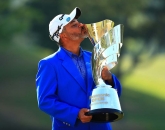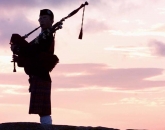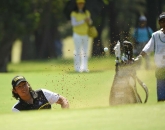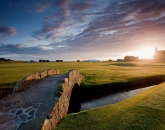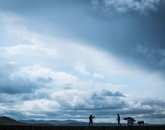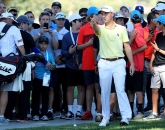
Like a Phileas Fogg in Around the World in 80 Days, Hagen unveiled his plans on 16 November, 1936 during a champagne press reception in his suite at the Book-Cadillac Hotel in Detroit, Michigan. A month later in Los Angeles, he finally persuaded Kirkwood to get involved. Figuring that Hagen would “probably get himself killed without me along,” he waved goodbye to his wife and teenage son for the last time in almost two years, and set about finalising the itinerary.
Sailing from Los Angeles to Honolulu on 28 January, 1937 the Tour – now labeled “The Greatest Show in Golf" – arrived in New Zealand. Ticket sales were equally buoyant in Australia six weeks later as huge crowds turned up to watch the legendary Hagen. Even the loss of their golf clubs en route to Tasmania failed to dent his enthusiasm as the next two months were spent entertaining galleries from Sydney in the east to Perth in the west.
Heading for England via golfing stops in Bombay, Cairo, Malta and France, they arrived in Southampton on 20 June. Speaking to the British press from his suite at the Savoy Hotel in London, he outlined his plans to captain his United States Ryder Cup team to victory at Southport in a few weeks time and possibly even winning the Open at Carnoustie for himself shortly afterward!
Rekindled by constant practice, it had been an amazing turnaround in form for the 46-year old legend. Playing in the US PGA Championship at Pinehurst in December 1936, his game was in shreds and he found himself half-topping shots for the first time in his life. His career had looked to be in terminal decline and now he talked openly about winning more majors. He even hinted that should any of his American team fall ill, he was ready to step into the breach and play despite being listed as ‘non-playing’ captain.
In the end, neither dream became reality. The USA team was far too strong for their British counterparts and won easily. Englishman Henry Cotton then grabbed a measure of revenge by winning The Open with Hagen struggling back in 26th place.
In many ways, Carnoustie was the turning point of the entire trip for Hagen. The next few months were spent barnstorming through Britain and continental Europe playing exhibition match after exhibition match. His golf game began to deteriorate noticeably as a combination of growing fatigue and diminishing enthusiasm kicked in. There was even discussion, albeit briefly, of returning to America in late September, but contracts had been signed and Hagen could not afford to be sued.
Pages
Click here to see the published article.


